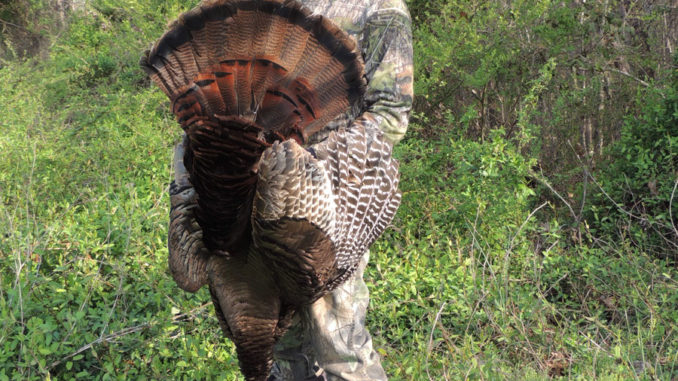
• Scout near creekbottoms and river bottoms. Look for places where turkeys have been scratching for bugs and worms. Follow their trail back up the ridges. Most turkeys will hang out just a few hundred yards from a stream.
• Turkeys have a lot of hollows and hills to hide in the rolling hills of the Uwharries. Use a locator call, such as an owl hoot, to locate a gobbler, but do not get too close and spook it.
• Do not call too much. Use a few soft hen calls to lure the gobbler close enough for a shot. Refrain from calling when the gobbler answers. Practice calling before the season begins. Use the call that works best for you.
• Be quiet and still. Sit against a wide-enough tree that your outline will not be visible. Use head-to-toe camouflage. Do not move your head and spook the bird.
• Always be ready to shoot. A gobbler may come in sight before you get a chance to set out decoys or get ready.
• Plant food plots to benefit turkeys on private land. Consider hunting or trapping to control predators.
• If you put out bait for deer, make sure that bait is gone at least 10 days before opening day of turkey season. Read and understand the regulations before a wildlife enforcement officer has to explain them to you while issuing a costly citation.
• Be safe. Using a gobbler call may attract attention or fire from another hunter who does not know your location. Hikers and other people use the game lands during turkey season. They may not be aware there are hunters in the woods, so watch out for them.




Be the first to comment